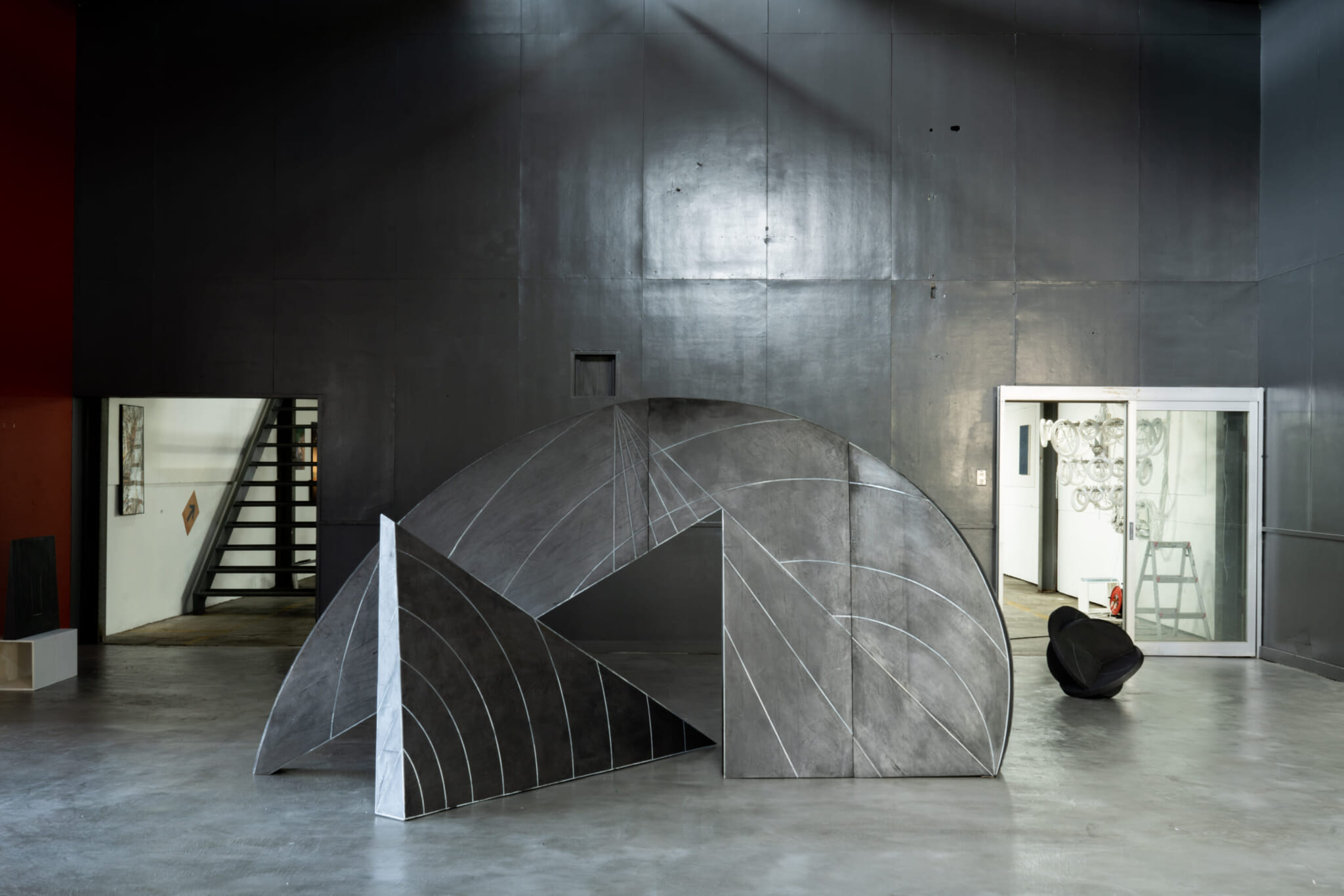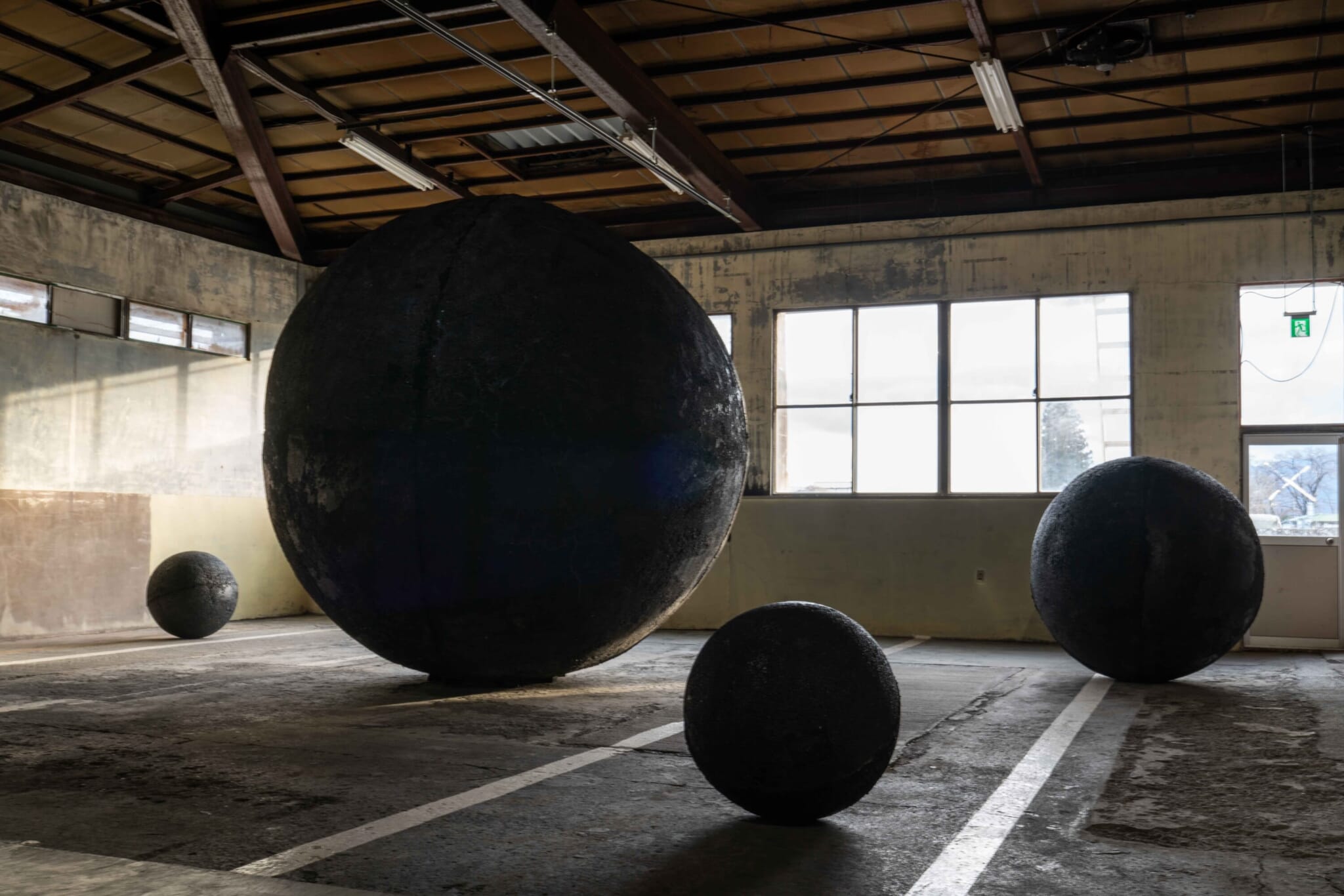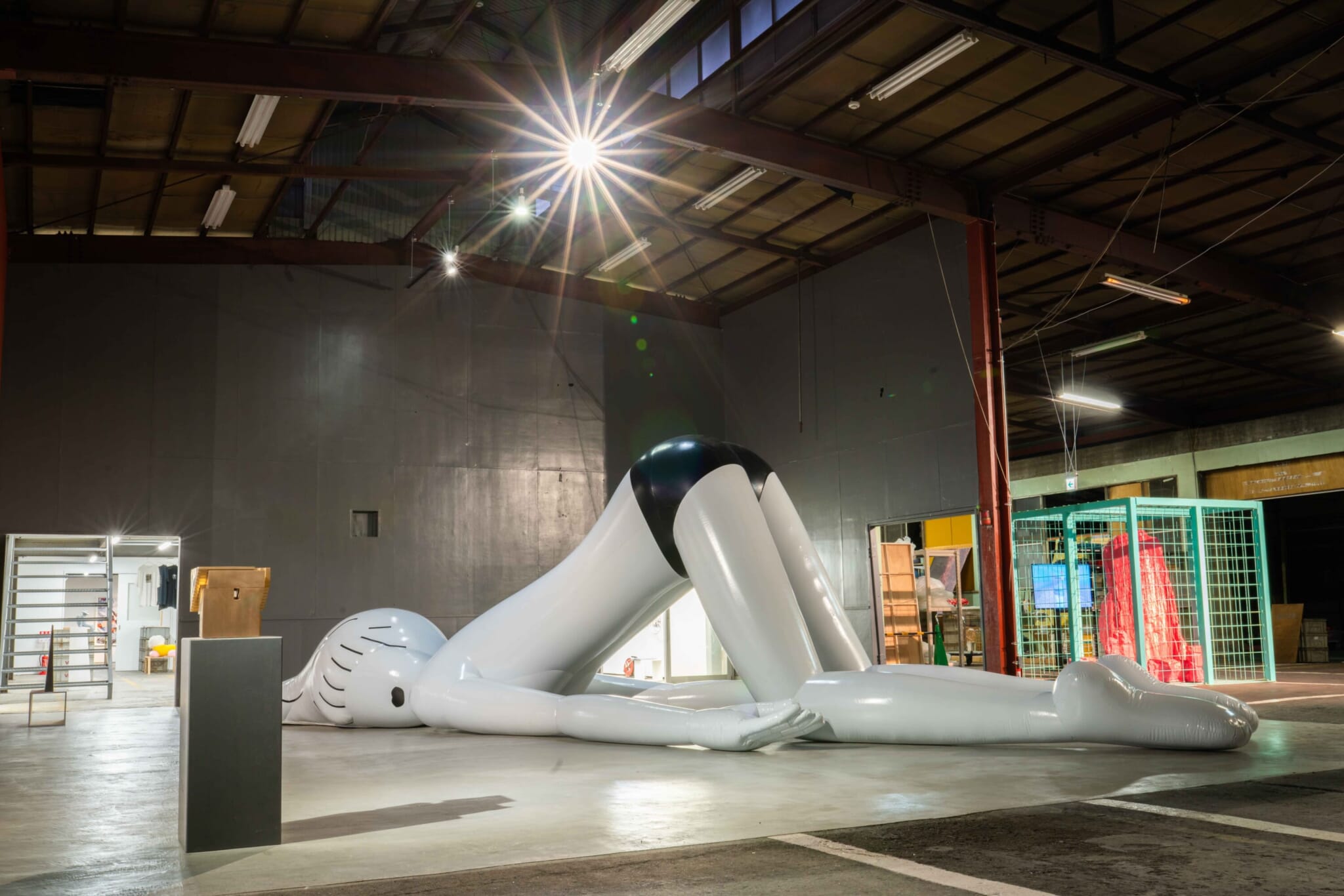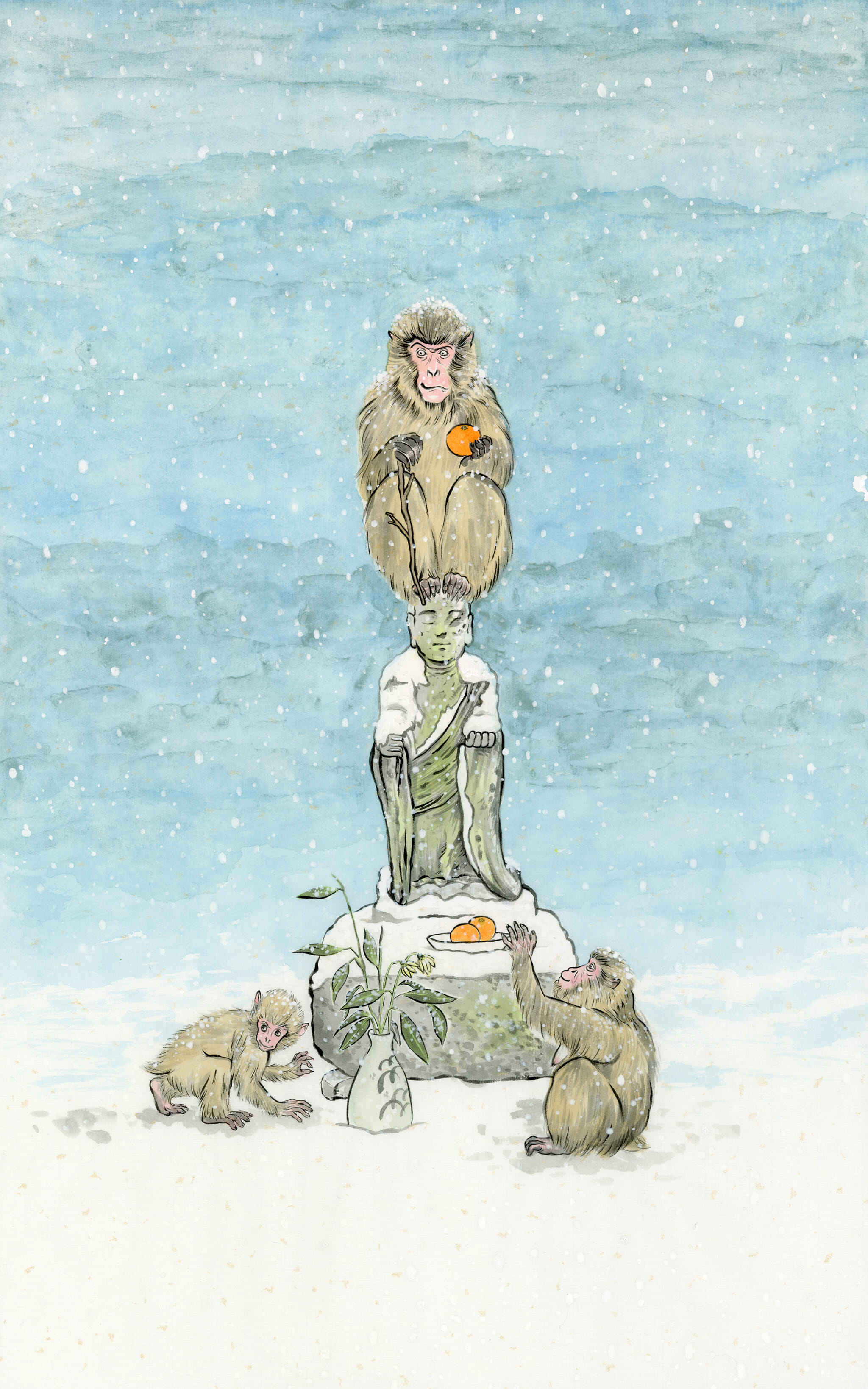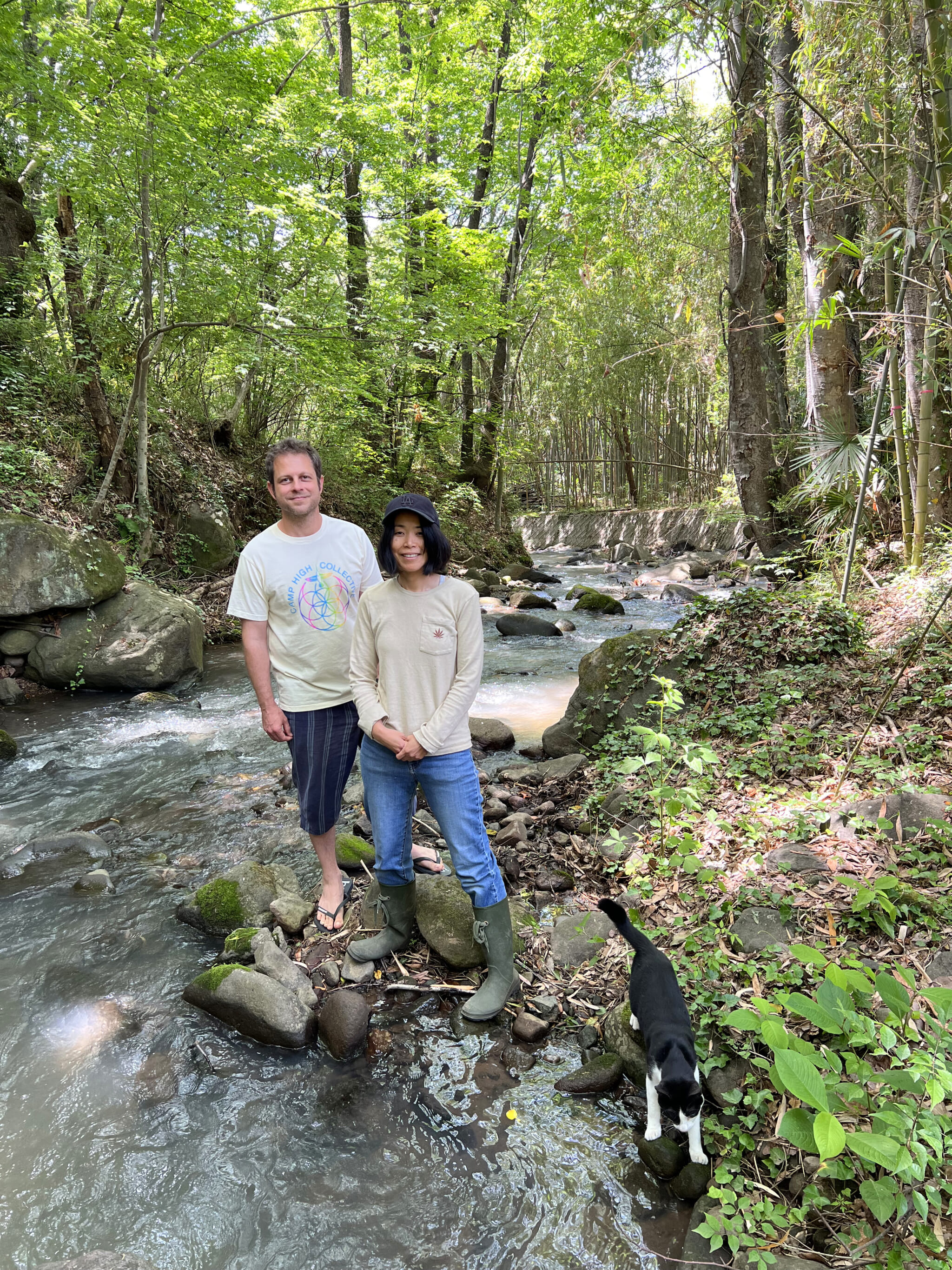Art grows in unexpected places. Take the Yamanashi Prefecture village of Akeno. Here, two hours away from Tokyo’s extensive network of galleries and museums, a large stand-alone building, once part of a Velbon tripod factory, is enjoying a new life as an art complex called Gasbon Metabolism.
It’s a lazy day after the opening night of the group exhibition “Diffusion of Nature,” but at the Mangosteen craft beer brewery and bar next door to the complex, the party atmosphere lingers, with several of the exhibiting artists taking turns walking up and down an imaginary catwalk, facetiously sashaying to the applause of their audience.
Among the crowd cheering on the shenanigans are Dan and Kozue Kitchens, the American and Japanese husband-wife illustration and fine art duo known as Kozyndan. Together, they are arguably one of the most important forces in California’s lowbrow scene. Next to them sits David Yuto, a young sculptor previously based in Tokyo who has resided at Gasbon Metabolism since its inception.
“The environment is so relaxed. It makes me feel like nothing stifles my creativity,” says Yuto. “I’ve been experimenting and challenging myself. Initially, I focused on creating large plaster sculptures, but now I’m exploring wood and ceramics.” Though Yuto occasionally returns to Tokyo to see friends and for events like the solo exhibition he recently held featuring sculptures made in his studio space at Gasbon Metabolism, he prefers life in Akeno. “I don’t have to overthink things here,” he says.
While Gasbon Metabolism and the surrounding countryside provide ample space for reflection, a distinctive meditative stillness permeates the massive exhibition halls that host the towering spherical sculptures of Takahiro Miyahara, the geometrical figures of Yuichi Yonebayashi and the enormous inflatable balloon girl — as adorable as it is provocative — of Auto Moai. Behind them are the studio spaces where Yuto and other resident artists attend to their craft, as well as an indoor hydroponic greenhouse where produce is grown.
From Factory to Gallery
The man behind it all is veteran gallerist Shinjiro Nishino, founder of the art book publishing house Gasbook and the contemporary art gallery Calm & Punk in Nishi-Azabu. These are but a few of the endeavors he’s led under the umbrella of his company, Gas As Interface.
Nishino’s journey to Akeno began in 2013 when a Gas As Interface director relocated to Hokuto, the wider city of which Akeno is a part. Following the director’s move, Nishino began visiting the area, and during a lull in new business opportunities in 2020, he came across the old Velbon factory on a property website. Recognizing its potential to become something like the framework that existed in his art school days in the 1980s, he seized the opportunity to acquire it.
“The fine art department wasn’t as regulated back then,” Nishino explains. “We had 24-hour access and were exposed to a variety of materials and techniques, including painting, sculpture, printmaking and photography. Communication between friends and faculty transcended age boundaries. Perhaps that’s what we’re trying to replicate here.”
But back to the sashaying. Mangosteen’s local brewmaster, Minoru Kurihara, stands behind the bar, amused by the scene. Akeno, with just 4,500 residents, had likely never seen anything like it before the pandemic. These days, however, the village sees plenty, both at Gasbon Metabolism and at Mangosteen, the latter of which opened its Hokuto branch in the old factory complex in November 2022.
“At first, we thought we met (the people of Gasbon Metabolism) by chance, but the more we talked, the more we realized that we have similar mindsets,” says Kurihara, explaining that even though the brewery isn’t directly involved with the art complex, many of its artists in residence, as well as those visiting for exhibitions, eat and drink at Mangosteen. “I guess we’re a spontaneous collaborator,” he muses and tells us of potential beer can designs created by Gasbon Metabolism artists.
Finding a Community
The aforementioned Kitchens of art duo Kozyndan are some of Mangosteen’s most regular patrons. The pair relocated to Yamanashi, Kozue’s home prefecture, from Los Angeles at the start of the pandemic with plans to restore the 130-year-old kominka — an old Japanese-style house built using traditional techniques — Kozue had purchased in 2018. Around the same time, and without the Kitchens’ knowledge, other artistic ventures were brewing in the area.
“Since we arrived at the start of COVID, we hadn’t interacted much with the community until things began to calm down last year, which coincided with Gasbon gearing up,” says Dan.
“While we still primarily create work for our international galleries, shops and clients, we also have a desire to connect with people and contribute to the local community,” he continues. “Many of our artist friends have started visiting, and they seem genuinely enthusiastic about our life here and the fusion of traditional inaka (countryside) farming culture and art. Like us, people recognize the potential for something beautiful if these two realms not only coexist but also collaborate.”
This has already begun. Kozue regularly works with local ceramic artists and has embedded her own ceramic practice into the local studio scene, firing her creations in local kilns and immersing herself in the traditional culture. Attending to their vast backyard — home to a bamboo forest, a gently flowing river and a plethora of homegrown produce, some of which they pass along to Mangosteen — is another ongoing project.
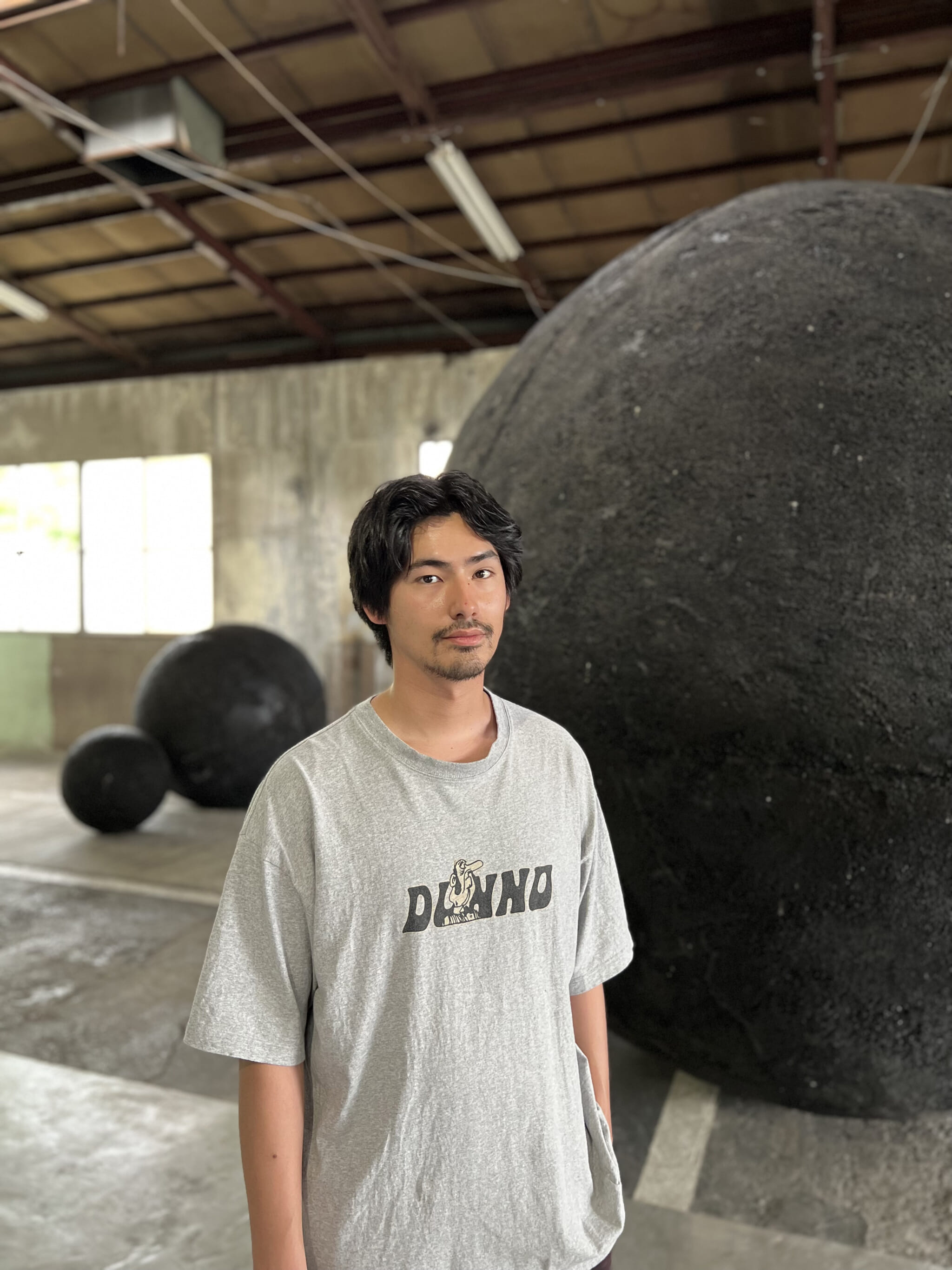
David Yuto | Photo by Erik Augustin Palm
Making Art, Together
Since opening in August 2022, Gasbon Metabolism has hosted both solo shows and group shows for a total of around 10 events. The recent “Diffusion of Nature” exhibition featured creators from the artist-in-residence program at Kumonodaira Mountain Hut in Japan’s Northern Alps. Thus far, Nishino’s vision for the space seems to be materializing.
Yuto, Kurihara, the Kitchens and the other contributors to the village’s flourishing cultural scene are all very much part of its organic growth. Nishino explains that the creative metabolism that characterizes the community extends across various domains, saying that the intention is to “promote culturally high-quality metabolism.”
He continues, “This means utilizing the facility in a way that serves the community with unique activities, even if the nature of its business changes. It involves respecting the wisdom of our predecessors in art and other cultural activities while embracing the inspiration and ideas that come from younger generations.”
Kozue is more concrete when she describes what’s happening in Akeno, saying, “Some artists have been here for decades, having moved from bigger cities to find more space. Gasbon Metabolism brings these artists together and introduces them to the local community. Without it, we wouldn’t have been aware of the existence of this creative community.”
She gives Mangosteen credit, too, for its part in nurturing growth by providing locals with a place to dine and gather. “When we first moved here, we had to drive to other towns to go to bars or eat out,” she says. “Finally, people have a place to casually drink and eat within walking distance. It’s been wonderful.”
| Location | |
| More Info |
Website →
0551304090 Closed on Tuesdays, Wednesdays and Thursdays |

